“An alphabetic order of accusations, beginnings and groceries” – on connecting writing and improvisation
A contribution by Verena Hahn and Marie-Lena Kaiser from Trixie The Hague
Dear reader! You are reading a report on An alphabetic order of accusations, beginnings and groceries – a workshop on collective dramaturgical decision making. The research that flowed in and out of this workshop so far has been wild and with a constantly shifting focus. In this report, I will do my best to describe them in a way you can follow, even if you haven’t been part of the process yet.
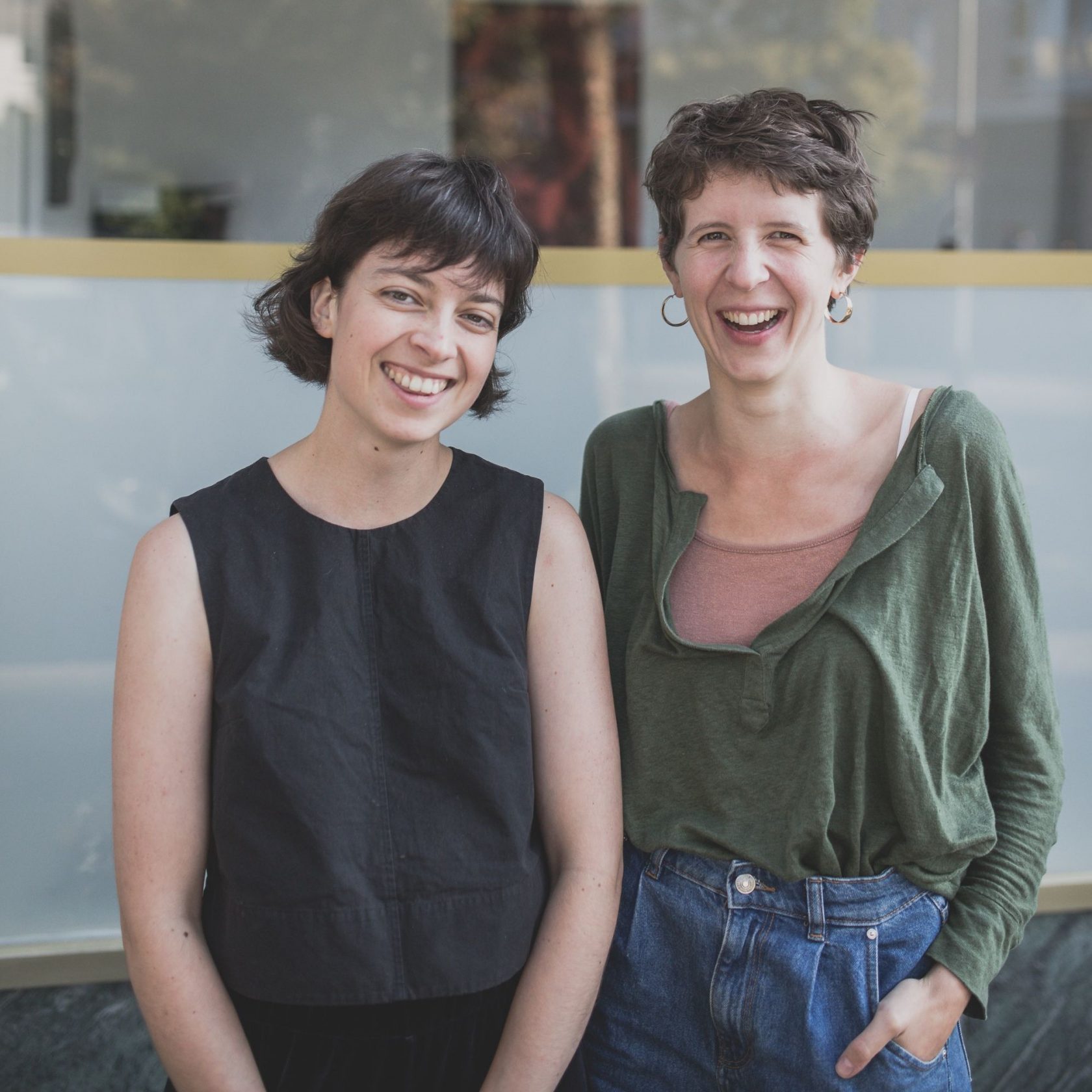
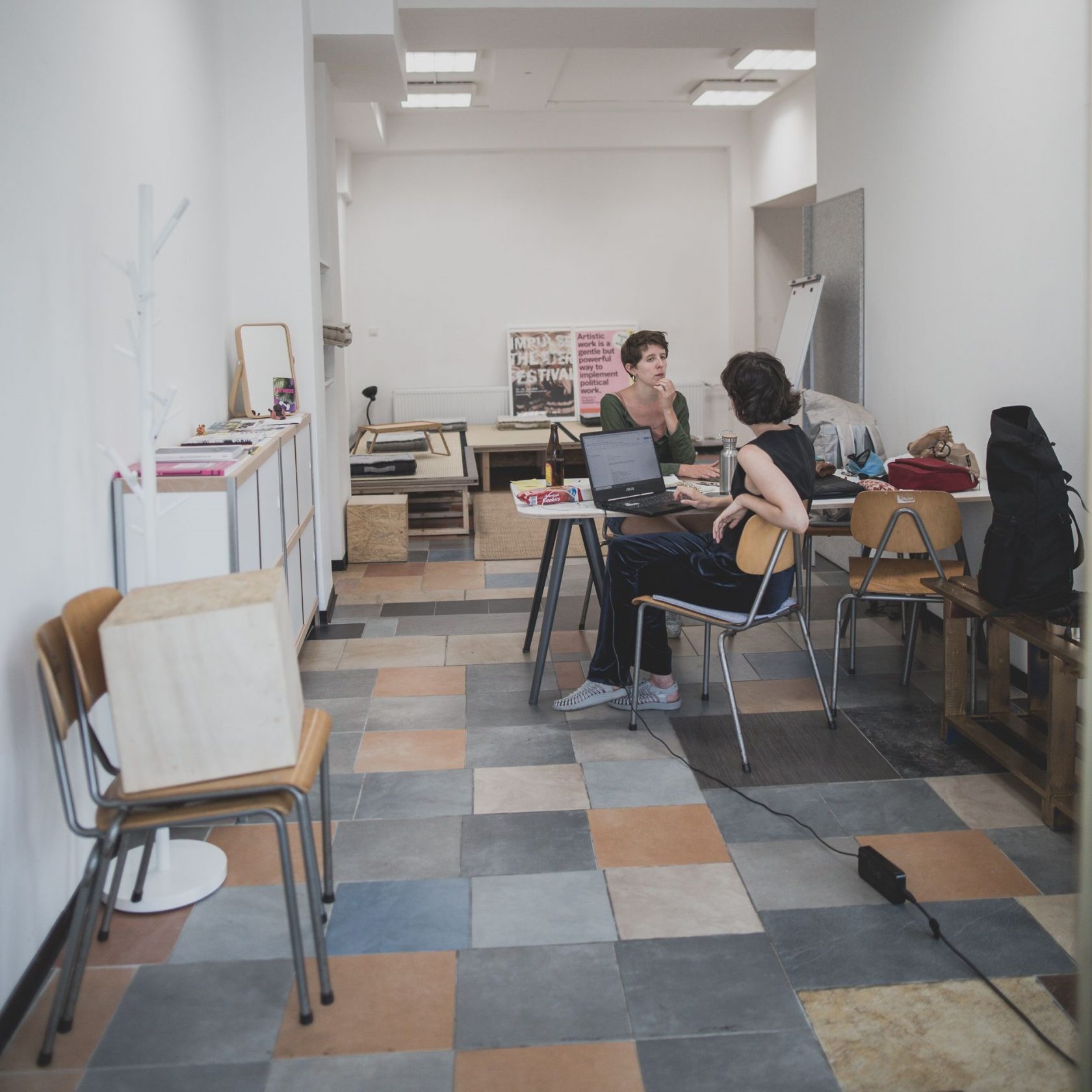
I, Verena Hahn, am a filmmaker, based in the genre of experimental documentary. Marie-Lena Kaiser is a choreographer and dancer. Since the beginning of 2021, we have been developing a method that allows us to get access to unarticulated dynamics that emerge when working with other people. In my case, that comes to life when I’m building a relationship with the protagonists of my films. In Marie-Lenas work, that happens when she is working with the performers of her choreographic work. It could also resonate with you if you are a performer or musician working with improvisation. Or if you are part of a collective or an ensemble and you want to grasp complex dynamics amongst you, or translate something that matters to you into the languages of your collaborators.
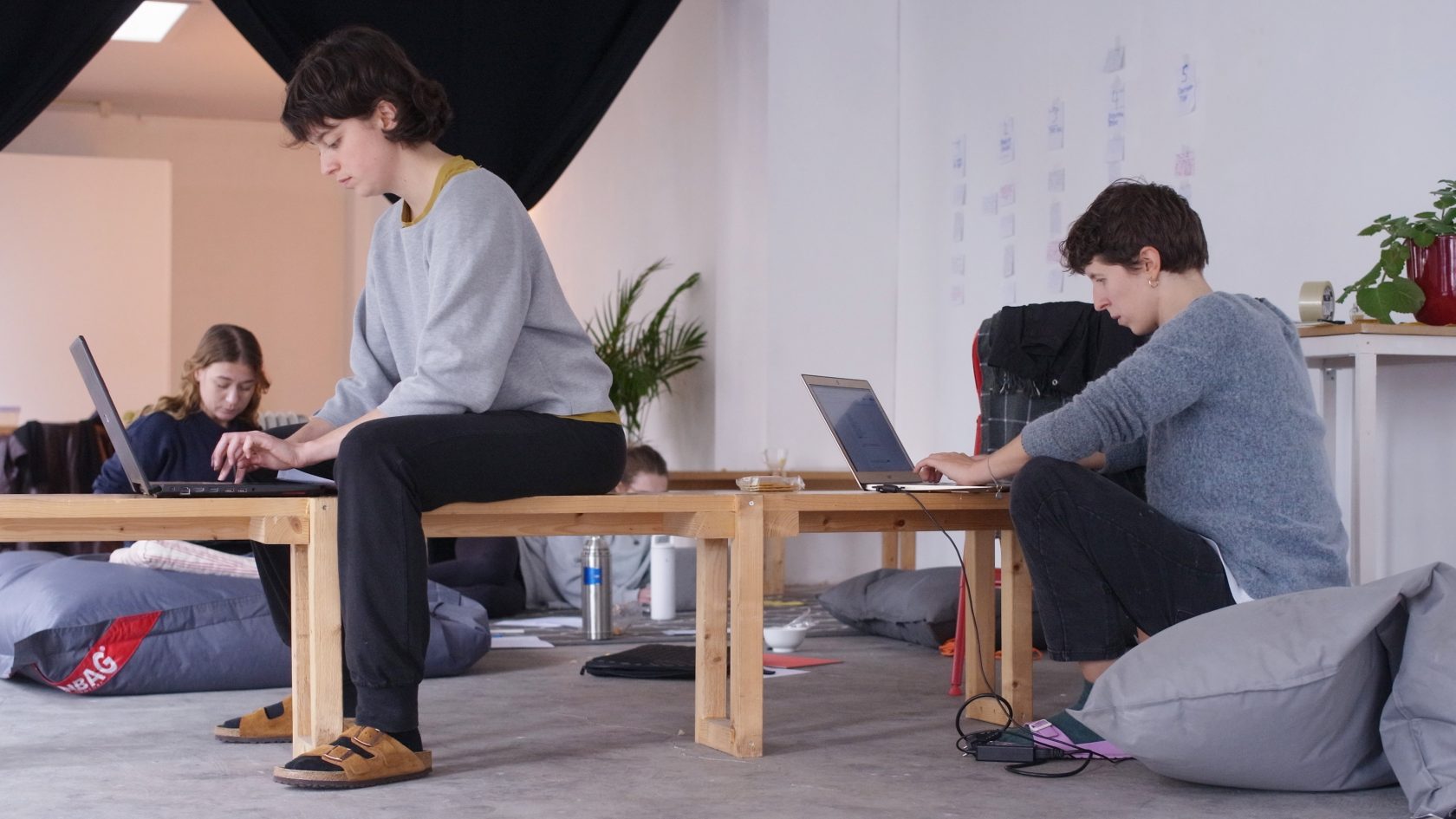
What turned into a workshop, initially started during Marie-Lena’s residency at the center for dance and performance PACT Zollverein in Essen. Marie-Lena was looking for a way to share her work and research in times during which it can’t be performed. She invited me into her residency to help her with the very simple task of describing her work.
We both had learned to describe our work in funding applications, artist statements or program descriptions, and we were fluent with some of the vocabulary you need to know in order to receive attention or money, maybe. Looking back and forth between the written descriptions and the actual works, we felt that the works always looked a bit pale when described through those languages. As if these texts wanted to prove that the artwork was more than it actually is, while simultaneously failing to convey the particular dynamics and interactions taking place not outside, but inside the work. We were looking for a way to capture the specific knowledge stemming from trainings, warm ups, interview requests, and the comfort or discomfort that is not expressed through words when we as directors ask others (performers, protagonists, audiences) to move in a situation we invite them into. Now, after a couple of months, I enjoy switching between informal and formal languages – writing in all these different languages reminds me of playing all by myself with dolls as a child, imagining feuds and love affairs between different characters that would all be myself in the end.
The group comes together in a circle. In clockwise direction, each person asks a question to the one next to them. This person thinks of an answer, but does not voice it. Instead, they ask a question to the one on their other side.
After a few rounds, the clockwise direction is repealed, and the recipient of the question can be chosen freely.
When the moment is right to continue, everyone can choose one question they have been asked, and answer that question on a piece of paper. Remember the questions by yourself, don’t ask the others to repeat what they asked you!
The time frame for answering the question is 20 minutes. Afterwards, the answers are read out by the person who asked them.
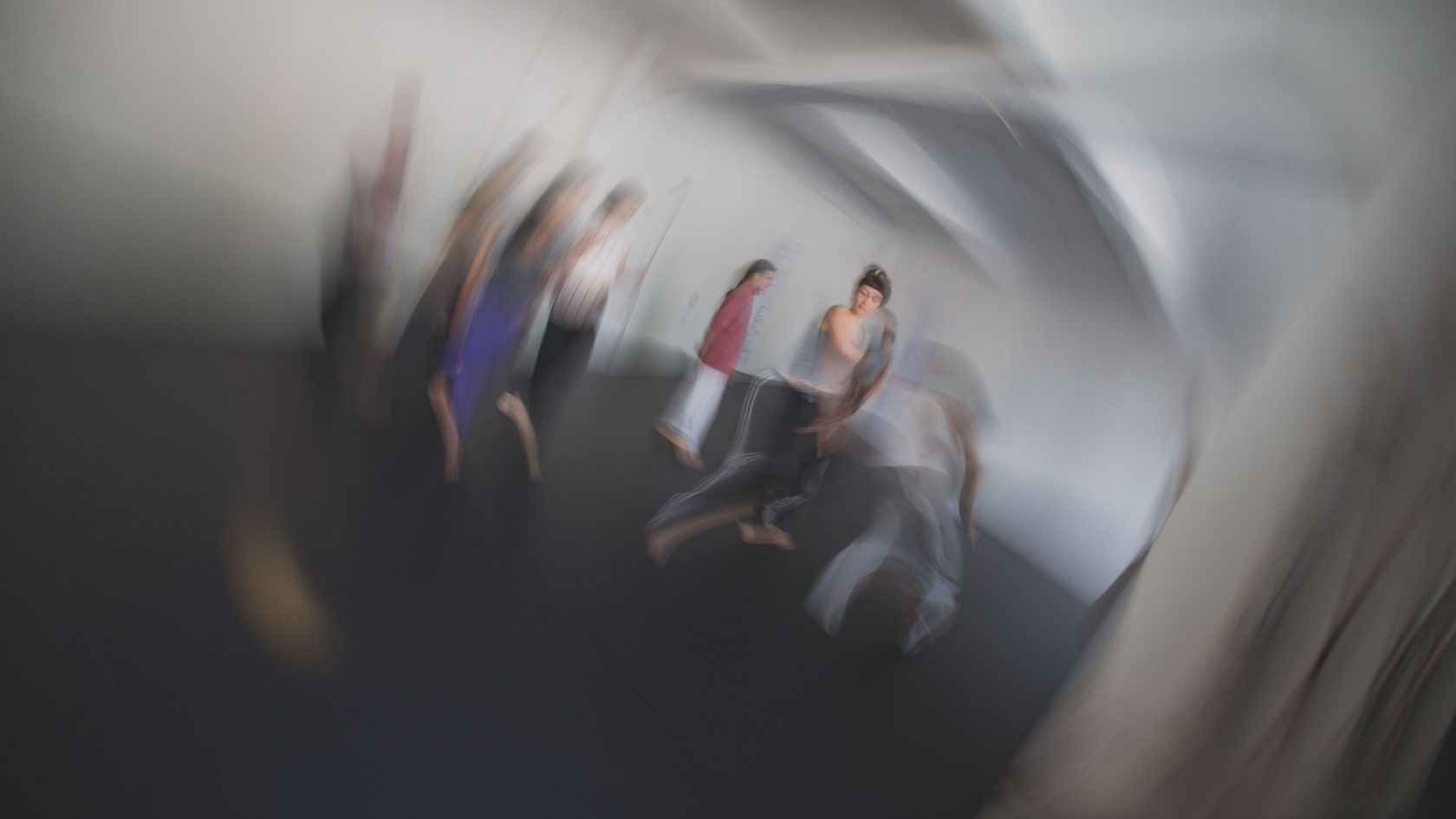
Since then, we have been inventing games to get from improvisation into writing. By now, we have a collection of repeatable exercises, but we are opening up more and more space for developing the exercises together with our guests. Because these exercises are not only helpful to write in all kinds of forms, but also for working through complex group processes. What happened during the movement sequence, unarticulated or chaotic, and what situation would it take for that moment to fully show itself?
Last time, during our workshop at Trixie Den Haag, we needed witness reports to get to the core of it. We started with a simple movement instruction: participants get together in pairs, one closes the eyes, the other leads the blind one safely through space. This time, the couples collided, and one of the closed-eyed fell down. Quickly,, she got up again, Marie-Lena instructed us to switch roles, and we continued. In a later conversation it turned out that the accident had kept us all busy. We spontaneously invented a game in which we divided the accident into 5 stages: the initial situation, the physical contact of collision, the fall, the interruption and the continuation. All of us wrote short witness reports for each of the 5 stages. Afterwards we read them out in switched roles. It turned out that all of us had been occupied with questions of guilt and responsibility, even the participant that had fallen. Through the game, we did not only get access to these inner monologues and cleared up an unarticulated conflict. We also already transformed them into a medium that could be read and performed, and further processed.
Get together with a partner. On a piece of paper you write down a list of 1- 20. One of you starts writing down a word at number 1, and the other one answers with another word at number 2. Alternate writing down words until the list is full.
Each one of you takes a seperate piece of paper. Imagine the list as a protocol of a conversation in which you were reacting towards another. Write down a memory protocol of that imagined conversation in a continuous text.
Read out the texts to each other.
Variation: You sit face to face with a partner. The rest of the group can sit around you and watch. One of the others sets an alarm for 5 minutes.
One of you starts to say one word. The other one repeats the same word. You both alternate repeating the word, until one of you comes up with a new word, that you both repeat alternately again, until the next word is thrown in. Continue until the alarm interrupts.
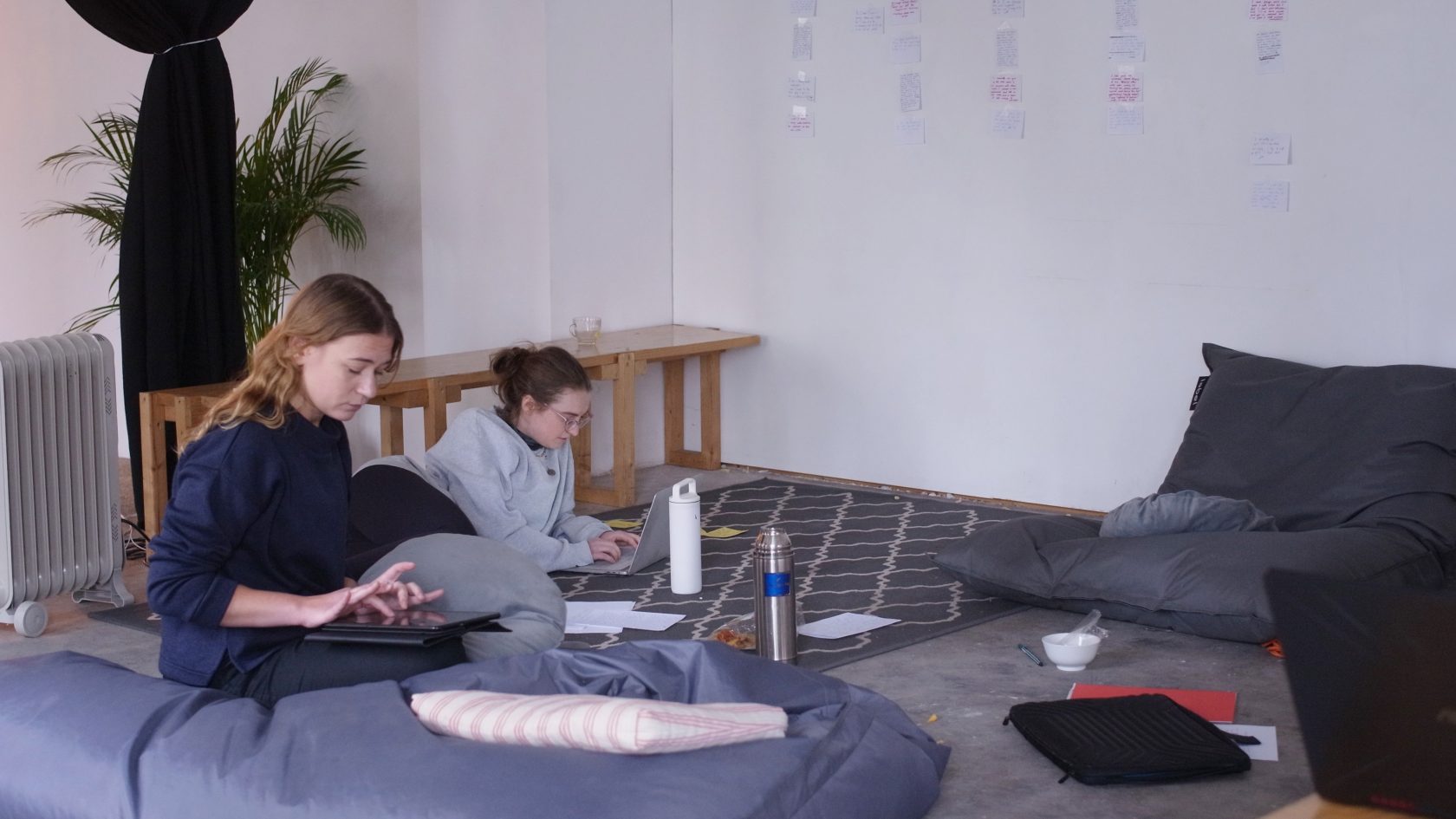
The workshop takes minimum 2 days, though we’re dreaming of a 4-5 days program, fully funded, with free access, accomodation and a chef cooking for the group. The only end result of the workshop is a glossary that the group generates from the produced texts and memories of something someone else said and that stuck to one’s mind. Remembering what someone said and passing it on to someone else is a form of attention we encourage throughout the whole workshop. Each day, in the last hour, we take some time to feed entries into the glossary in Google Docs, and it slowly grows before our eyes. The workshop ends with the group reading out the full document. The collective reading always feels like conversing in a shared secret language.
The workshop leaders prepare a pile of DINA7-A6 papers. The participants are asked to write down their thoughts on a question asked by the workshop leaders that derives from a preceding improv session. Examples for this question could be: What was leading you? In which situations did you take decisions?
On each piece of paper, the participants write down one thought. When they are feeling ready to share, they choose one other participant, walk towards them and tell them about it. The other one is asked only to listen, not to reply. However, there is the possibility to tell their own thought in return.
When one participant receives a thought that they find interesting, they can write down that thought and pass it on to someone else – either by just repeating what they heard, or by adding their own perspective to it.
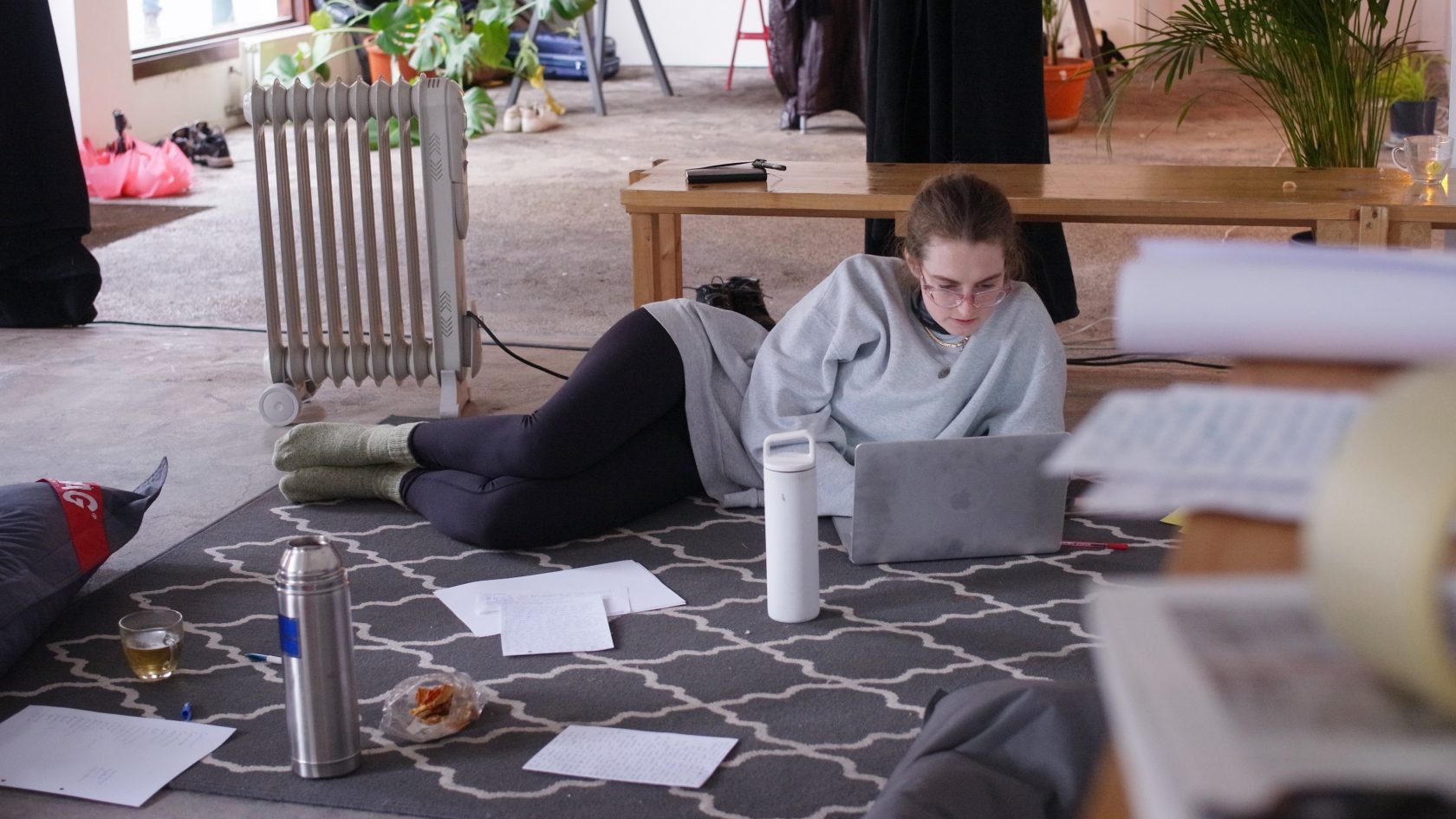
So far, our workshop guests included performers and musicians who want to put their physical or sonic research into words, and artists from all disciplines who want to use writing as a means to communicate in collaboration. For Marie-Lena and me, this way of working is useful because both our work is dependent on feedback we get from the people we work with – be it performers or documentary protagonists. Marie-Lena asks her performers to apply her instructions to their bodies, whereas I’m interested in interacting with my protagonists in a situation that is artificial and invented, and only becomes real through my film. Both of us are working with persons that know their bodies, their environments, their determining factors better than we, the directors, do. Dance theorists Jo Butterworth and Liesbeth Wildschut, who also use workshops for collaborative dramaturgic decision making, write: “[…] in order to work dramaturgically during an artistic process and to let an idea/project develop, one has to practice it in relation to others (people, sources, objects and so forth).” The situations we put our participants into need to be tested and approved by them. So, in order to make dramaturgical decisions that follow the logic of the subjects we work with, we are looking for a process of commoning while still keeping up an articulated hierarchy that shows in the position of the director, taking decisions and responsibility. Through the (writing) games, the feedback we receive goes beyond (dis)approval. The uttered comfort or discomfort with our instruction finds a form that might be more interesting than the scene we originally proposed.
The last paragraph sounds a bit like the kind of texts I was annoyed by just a few paragraphs earlier. The process was very playful and fun, but I often struggled to explain to my parents what is the use of these exercises. This resulted in my father struggling to explain to our neighbours what his daughter’s current occupation was. I’m feeling delighted about this open process which was made possible through pandemic funding structure. As there were no concerts to rehearse for or exhibitions to prepare, and the upcoming months and years seemed unpredictable, it would have been anachronistic to connect the pandemic rescue programs to a project proposal that would be executed as promised in the announced time frame. Through PACT Zollverein, Marie-Lena and I received the #TakeCare grant which allowed us to come together because we were interested in the way the other one is working, without having a clear project planned ahead – a work that, just like other research processes in general, is somehow expected to happen without financial resources. The temporary acknowledgement of open research processes showed a better understanding of working conditions in arts than those funding programs that define the beginning of a work through the first shooting day or the first construction market bill – it would be worth it to keep up this funding structure post-Corona.
What the workshop really was about (explain the workshop to someone you know):
Karolina Knoll to her mother-in-law Rosi: Today I’m at a workshop. Workshop – oh god, how can I translate this? Workshop means “Arbeiten” (work) and “Geschäft” (shop), a work shop. But in German, you would say Fortbildung (training course) or Lehrgang (seminar). It’s not work, so I’m not there for work. I don’t earn anything there. I will learn something there today, which is why it’s like a seminar or so. We’re also not dancing there the whole day, but we have a topic, and then we move to it and speak about it. And in the end, there’s a result, or also not. But no dance choreography. It’s a bit more free than that.
Cathleen to her aunt: A month ago, on Instagram, I saw a workshop being advertised called “An alphabetic order of accusations, beginnings and groceries”… which actually I shouldn’t have even mentioned that because the title is a bit misleading. So yeah, I signed up for it because I think I told you, I’ve been trying to get out of the house more. It started with movement exercises – walking, jumping, dancing – and ended with us making our own dictionary. The dictionary was experimental, so the definitions of words were more about memories and thoughts and half baked ideas. I think you’d get a better idea if I showed it to you. You know when Patrick and I would make up a whole secret language to communicate on car trips? We made something like that.
Marie-Lena to her crush from 8th grade: So, ballet, you know that, right? I actually do something like ballet, but it’s not as difficult, I’d say. I also sometimes work with people that are not professional dancers, but actors or so. In ballet there is often one person who says what to do. And in the dance that I do, we talk to each other more and we are more on one eye level. There is no one deciding for everyone what should be done. Even though that’s not always the case. So they often say it would be like that, and in the end, it’s like in ballet anyway. And we’re barefoot most of the time, without slippers. It’s also not about being super beautiful.
Verena Hahn is a film maker and graphic designer based in Cologne and Den Haag. Marie-Lena Kaiser is a choreographer and dancer based in Essen and currently doing her Master at the Institute for Applied Theater Studies in Gießen.